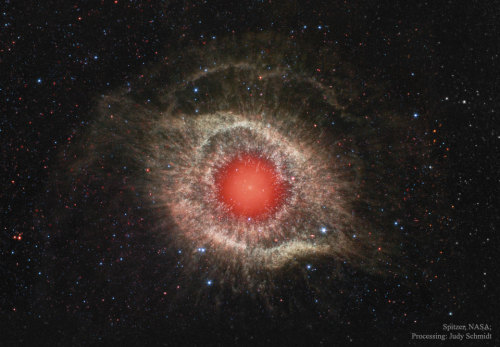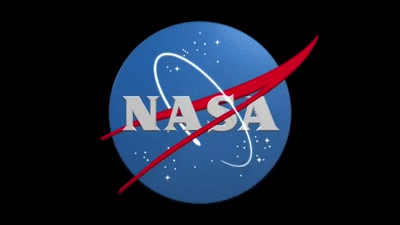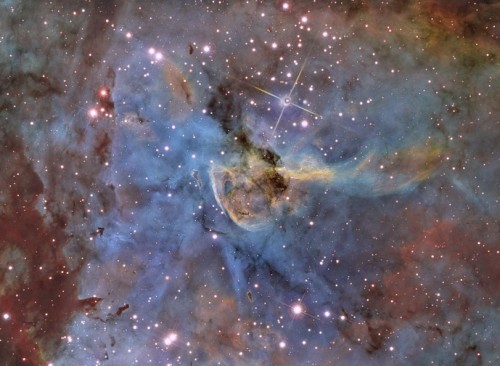Living And Working Aboard Station
Living and Working Aboard Station
Join us on Facebook Live for a conversation with astronaut Kate Rubins and the director of the National Institutes for Health on Tuesday, October 18 at 11:15 a.m. ET.
Astronaut Kate Rubins has conducted out of this world research aboard Earth’s only orbiting laboratory. During her time aboard the International Space Station, she became the first person to sequence DNA in space. On Tuesday, she’ll be live on Facebook with National Institute of Health director Francis Collins, who led the effort to map the human genome. You can submit questions for Kate using the hashtag #SpaceChat on Twitter, or during the live event. Here’s a primer on the science this PhD astronaut has been conducting to help inspire your questions:

Kate has a background in genomics (a branch of molecular genetics that deals with the study of genomes,specifically the identification and sequencing of their constituent genes and the application of this knowledge in medicine, pharmacy,agriculture, and other fields). When she began her tenure on the station, zero base pairs of DNA had been sequenced in space. Within just a few weeks, she and the Biomolecule Sequencer team had sequenced their one billionth base of DNA aboard the orbital platform.
“I [have a] genomics background, [so] I get really excited about that kind of stuff,” Rubins said in a downlink shortly after reaching the one billion base pairs sequenced goal.
Learn more about this achievement:
+First DNA Sequencing in Space a Game Changer
+Science in Short: One Billion Base Pairs Sequenced
Why is DNA Sequencing in Space a Big Deal?
A space-based DNA sequencer could identify microbes, diagnose diseases and understand crew member health, and potentially help detect DNA-based life elsewhere in the solar system.
+Why Sequencing DNA in Space is a Big Deal
https://youtu.be/1N0qm8HcFRI
Miss the Reddit AMA on the subject? Here’s a transcript:
+NASA AMA: We just sequenced DNA in space for the first time. Ask us anything!
NASA and Its Partnerships

We’re not doing this alone. Just like the DNA sequencing was a collaborative project with industry, so is the Eli Lilly Hard to Wet Surfaces investigation, which is a partnership between CASIS and Eli Lilly Co. In this experiment aboard the station, astronauts will study how certain materials used in the pharmaceutical industry dissolve in water while in microgravity. Results from this investigation could help improve the design of tablets that dissolve in the body to deliver drugs, thereby improving drug design for medicines used in space and on Earth. Learn more about what we and our partners are doing:
+Eli Lilly Hard to Wet Surfaces – been happening the last week and a half or so
Researchers to Test How Solids Dissolve in Space to Design Better Tablets and Pills on Earth
With our colleagues at the Stanford University School of Medicine, we’re also investigating the effects of spaceflight on stem cell-derived heart cells, specifically how heart muscle tissue, contracts, grows and changes in microgravity and how those changes vary between subjects. Understanding how heart muscle cells change in space improves efforts for studying disease, screening drugs and conducting cell replacement therapy for future space missions. Learn more:
+Heart Cells
+Weekly Recap From the Expedition Lead Scientist for Aug. 18, 2016
It’s Not Just Medicine

Kate and her crew mates have also worked on the combustion experiments.
Kate has also worked on the Bigelow Expandable Activity Module (BEAM), an experimental expandable capsule that docks with the station. As we work on our Journey to Mars, future space habitats are a necessity. BEAM, designed for Mars or other destinations, is a lightweight and relatively simple to construct solution. Kate has recently examined BEAM, currently attached to the station, to take measurements and install sensors.

Kate recently performed a harvest of the Plant RNA Regulation experiment, by removing seed cassettes and stowing them in cold stowage.

The Plant RNA Regulation investigation studies the first steps of gene expression involved in development of roots and shoots. Scientists expect to find new molecules that play a role in how plants adapt and respond to the microgravity environment of space, which provides new insight into growing plants for food and oxygen supplies on long-duration missions. Read more about the experiment:
+Plant RNA Harvest
NASA Astronaut Kate Rubins is participating in several investigations examining changes in her body as a result of living in space. Some of these changes are similar to issues experienced by our elderly on Earth; for example, bone loss (osteoporosis), cardiovascular deconditioning, immune dysfunction, and muscle atrophy. Understanding these changes and how to prevent them in astronauts off the Earth may help improve health for all of us on the Earth. In additional, the crew aboard station is also working on more generalized studies of aging.
+ Study of the effects of aging on C. elegans, a model organism for a range of biological studies.
More Posts from Samstein1012 and Others
'NASA's Hubble Telescope Detects ‘Sunscreen' Layer on Distant Planet': via #NASA_APP

The arrangement of the spiral arms in the galaxy Messier 63, seen here in an image from the NASA/ESA Hubble Space Telescope, recall the pattern at the center of a sunflower. So the nickname for this cosmic object -- the Sunflower Galaxy -- is no coincidence. Discovered by Pierre Mechain in 1779, the galaxy later made it as the 63rd entry into fellow French astronomer Charles Messier's famous catalogue, published in 1781. The two astronomers spotted the Sunflower Galaxy's glow in the small, northern constellation Canes Venatici (the Hunting Dogs). We now know this galaxy is about 27 million light-years away and belongs to the M51 Group -- a group of galaxies, named after its brightest member, Messier 51, another spiral-shaped galaxy dubbed the Whirlpool Galaxy. Galactic arms, sunflowers and whirlpools are only a few examples of nature's apparent preference for spirals. For galaxies like Messier 63 the winding arms shine bright because of the presence of recently formed, blue-white giant stars and clusters, readily seen in this Hubble image. Image credit: ESA/Hubble & NASA Text credit: European Space Agency Hubble Space Telescope

Helix Nebula // NGC 7293

Nearly two years after a privately built Antares rocket crashed and exploded, the booster's builder Orbital ATK is ready to return to flight. Tonight (Oct. 16), an upgraded version of the Antares rocket will soar into the sky above Virginia's Eastern Shore, a nightttime launch that could be visible to potentially millions of observers up and down the U.S. East Coast, weather permitting. The Antares rocket will launch Orbital ATK's Cygnus spacecraft on a NASA cargo delivery mission to the International Space Station. Liftoff is set for 8:03 p.m. EDT (0003 Oct. 17 GMT) from Pad-0A of the Mid-Atlantic Regional Spaceport at NASA's Wallops Flight Facility on Wallops Island, Virginia. You can watch a webcast of the launch herebeginning at 7 p.m. EDT (2300 GMT), courtesy of NASA TV. Advertisemen








Full video: Stephen Colbert Helps President Obama Polish Up His Résumé
The NASA “Worm” Logo
Just like many organizations, the style and logos can change over time. You are probably most familiar with our “meatball” logo. No, unfortunately this does not refer to the delicious food. This logo (below) is our most popular symbol, and dates back to 1959.

But, we’ve also had other insignia that represented our organization throughout the years.
The “worm” logo (below) was used by the agency from 1975 until 1992. The organization wanted to create a more “modern” logo, which resulted in the unique type style of the “worm” logo.

Even though this logo was retired in 1992, the Graphics Standards Manual is still available online HERE.
You can also read up about the emblems, logos and insignia used by NASA throughout the years in a new e-Book available for free HERE.
Make sure to follow us on Tumblr for your regular dose of space:http://nasa.tumblr.com

Pluto in Combined Color
What is fascinating about Pluto is how young its surface is. We can see some canyons, planes, and mountains in this image - which is an indication of a young surface. This image of Pluto was taken when the New Horizons spacecraft was only 280,000 miles away from the surface. In the image you can see features as small as 1.4 miles! Four images from New Horizons’ Long Range Reconnaissance Imager (LORRI) were combined with color data from the Ralph instrument to create this enhanced color global view.
Credit: John’s Hopkin’s APL/NASA JPL
William Shatner pictured hours after the death of Leonard Nimoy @MailOnline
-
 aintitfun21 reblogged this · 7 years ago
aintitfun21 reblogged this · 7 years ago -
 charlottephillips-blog1 liked this · 8 years ago
charlottephillips-blog1 liked this · 8 years ago -
 invalidblacky-blog liked this · 8 years ago
invalidblacky-blog liked this · 8 years ago -
 best-hotels-posts reblogged this · 8 years ago
best-hotels-posts reblogged this · 8 years ago -
 arteims reblogged this · 8 years ago
arteims reblogged this · 8 years ago -
 malanka-sun liked this · 8 years ago
malanka-sun liked this · 8 years ago -
 thingsmaggydigs liked this · 8 years ago
thingsmaggydigs liked this · 8 years ago -
 blindjetpilot reblogged this · 8 years ago
blindjetpilot reblogged this · 8 years ago -
 supremeskoolkid liked this · 8 years ago
supremeskoolkid liked this · 8 years ago -
 a-loss-forwords liked this · 8 years ago
a-loss-forwords liked this · 8 years ago -
 wolfbriar reblogged this · 8 years ago
wolfbriar reblogged this · 8 years ago -
 footstepsinthesky liked this · 8 years ago
footstepsinthesky liked this · 8 years ago -
 ditaan-blog-blog liked this · 8 years ago
ditaan-blog-blog liked this · 8 years ago -
 alicerobertstext reblogged this · 8 years ago
alicerobertstext reblogged this · 8 years ago -
 riderbk liked this · 8 years ago
riderbk liked this · 8 years ago -
 ironhidesdaughter-blog reblogged this · 8 years ago
ironhidesdaughter-blog reblogged this · 8 years ago -
 kairav-blog liked this · 8 years ago
kairav-blog liked this · 8 years ago -
 etherviolet liked this · 8 years ago
etherviolet liked this · 8 years ago -
 beatrice-otter reblogged this · 8 years ago
beatrice-otter reblogged this · 8 years ago -
 nofii95 liked this · 8 years ago
nofii95 liked this · 8 years ago -
 raversfantasyrf liked this · 8 years ago
raversfantasyrf liked this · 8 years ago -
 kaldary reblogged this · 8 years ago
kaldary reblogged this · 8 years ago -
 kratossuvarious reblogged this · 8 years ago
kratossuvarious reblogged this · 8 years ago -
 kratossuvarious reblogged this · 8 years ago
kratossuvarious reblogged this · 8 years ago -
 kratossuvarious liked this · 8 years ago
kratossuvarious liked this · 8 years ago -
 zoyrino liked this · 8 years ago
zoyrino liked this · 8 years ago -
 the-grey-areas-blog reblogged this · 8 years ago
the-grey-areas-blog reblogged this · 8 years ago -
 123456789abg-blog liked this · 8 years ago
123456789abg-blog liked this · 8 years ago -
 jigokunotenshi reblogged this · 8 years ago
jigokunotenshi reblogged this · 8 years ago -
 wastelandmiracle liked this · 8 years ago
wastelandmiracle liked this · 8 years ago -
 kansouame liked this · 8 years ago
kansouame liked this · 8 years ago -
 meinenaffenhosen liked this · 8 years ago
meinenaffenhosen liked this · 8 years ago -
 depthsofmysol reblogged this · 8 years ago
depthsofmysol reblogged this · 8 years ago -
 chromeviking liked this · 8 years ago
chromeviking liked this · 8 years ago -
 opdroygaraytekin reblogged this · 8 years ago
opdroygaraytekin reblogged this · 8 years ago -
 opdroygaraytekin liked this · 8 years ago
opdroygaraytekin liked this · 8 years ago -
 samafermion liked this · 8 years ago
samafermion liked this · 8 years ago
Elon Musk,Electric Cars,MIT, Spacex, NASA, Tesla and Taylor Alison Swift
34 posts
